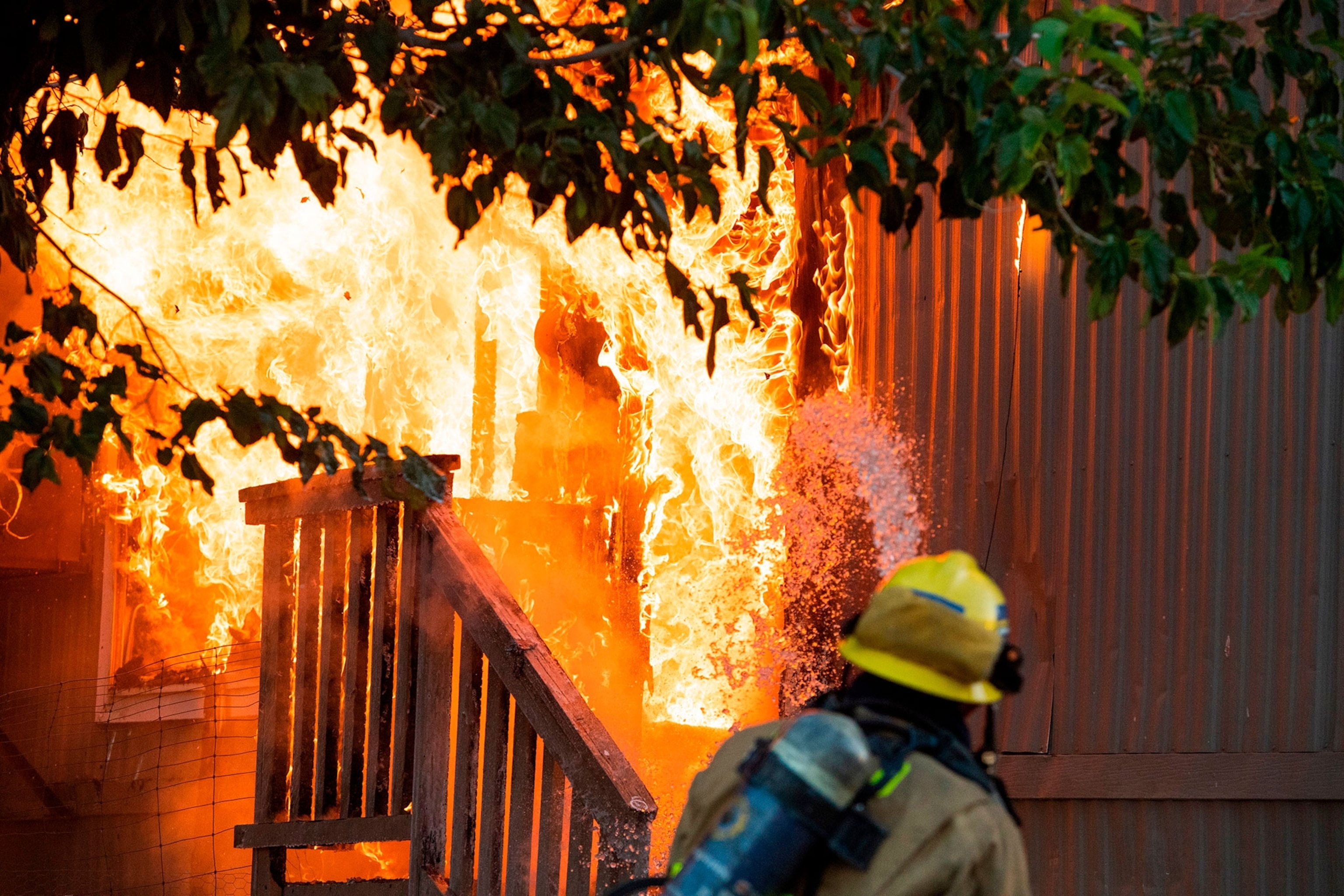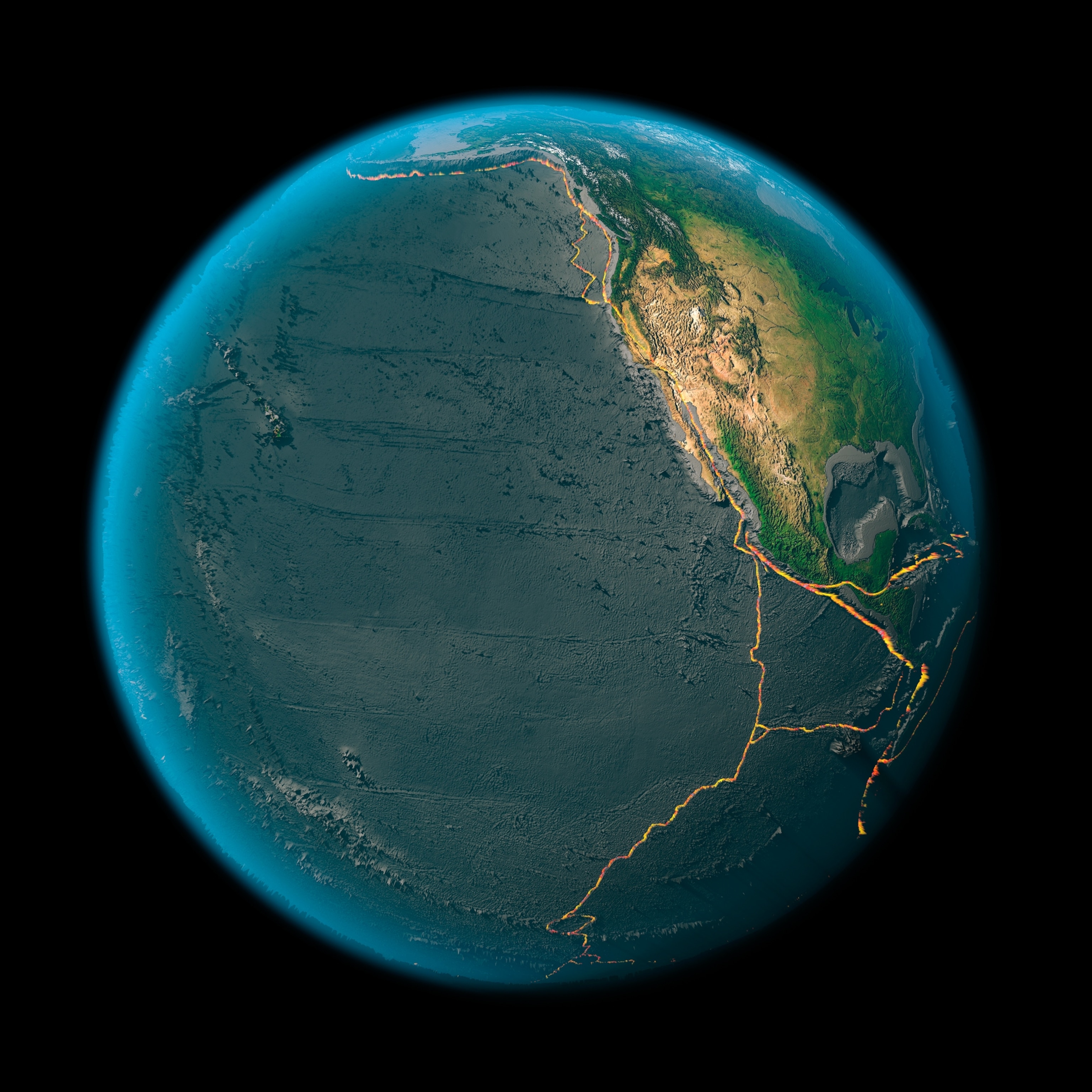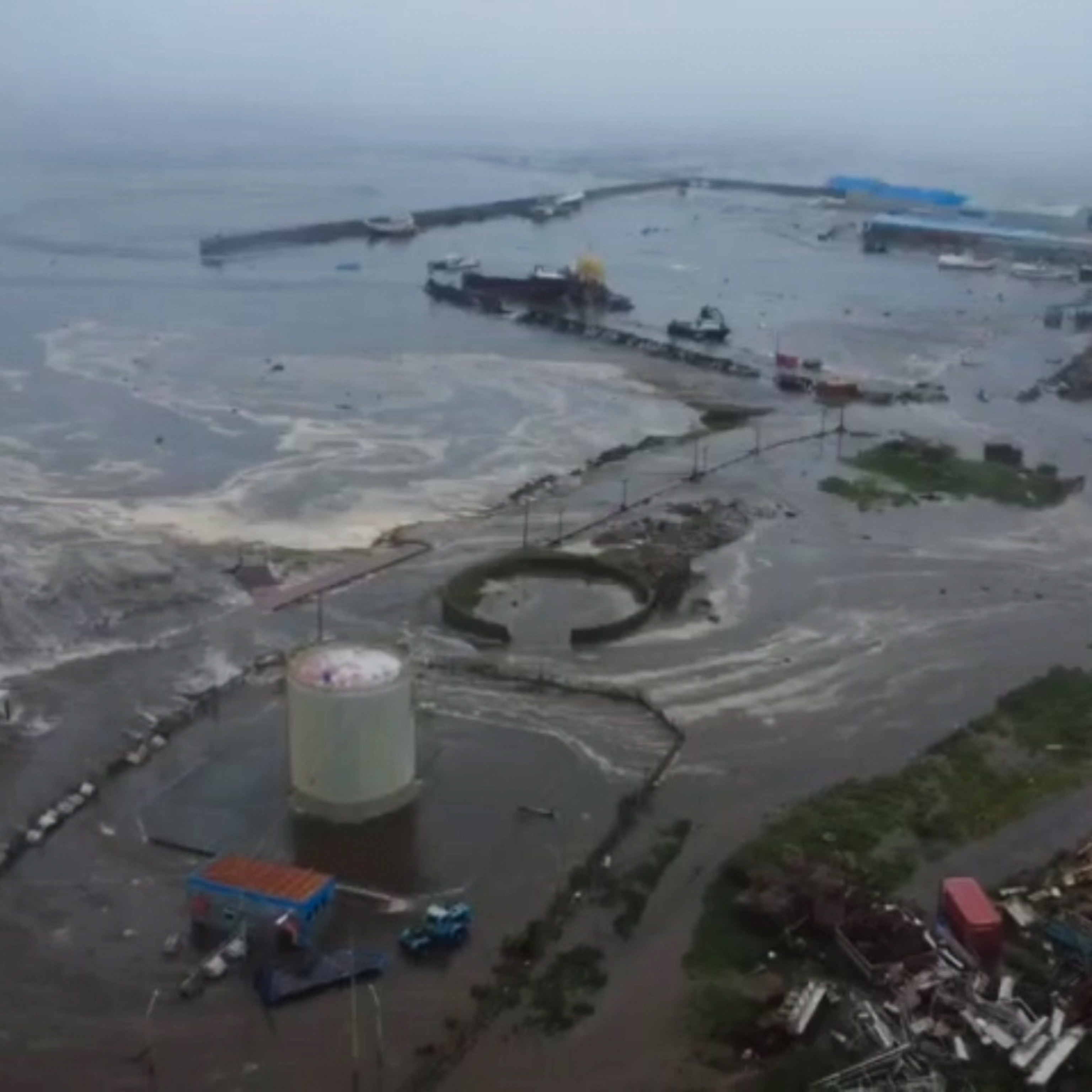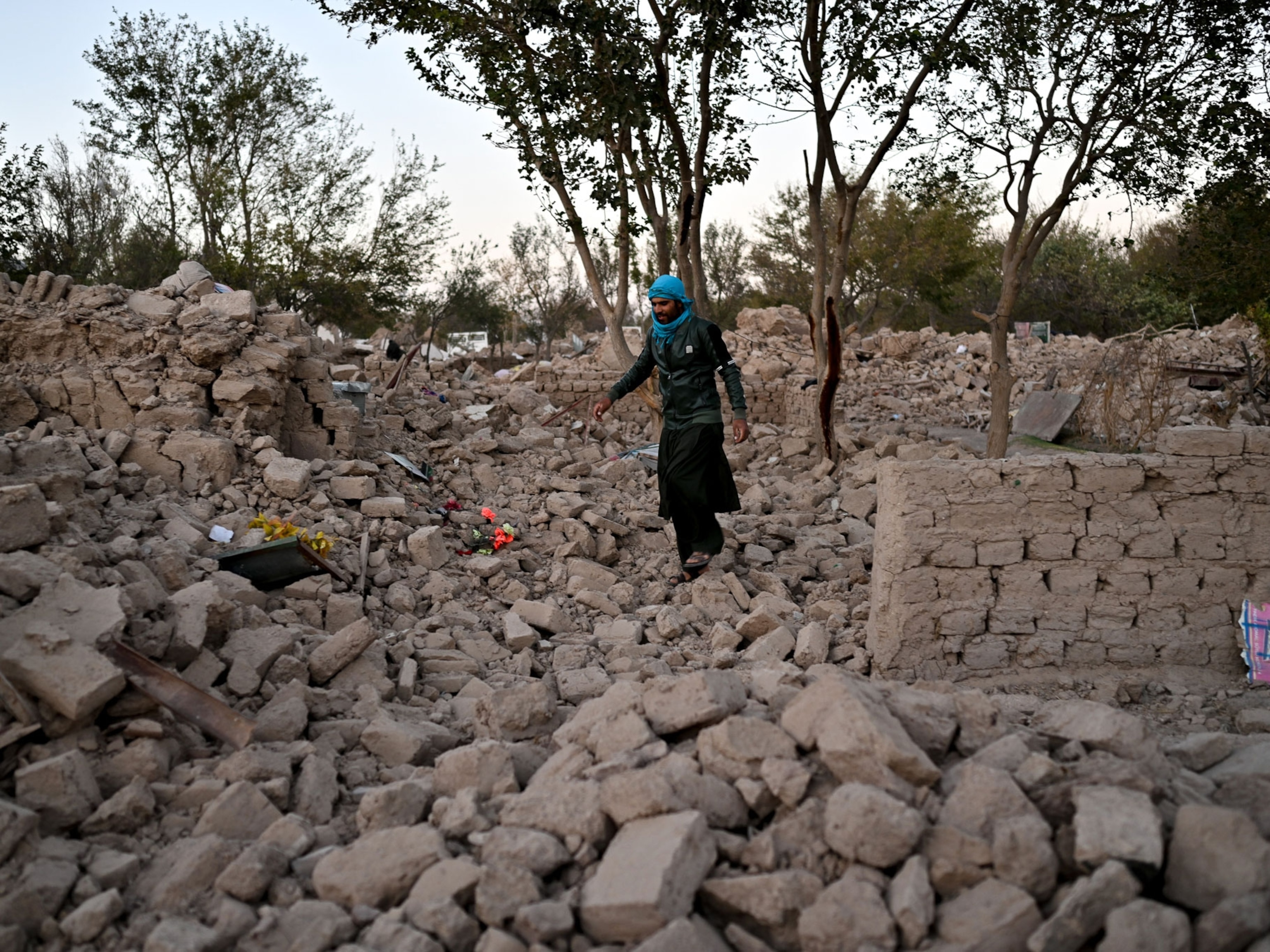On the morning of July 4, a magnitude 6.4 rocked Southern California, fracturing roads and sending people fleeing to safety. But that wasn’t all the Earth had in store: Less than a day and a half later, a powerful magnitude 7.1 temblor shook the region.
While earthquakes are not unexpected, the two most recent temblors are the largest that have struck this area in decades. And they promise to yield fresh clues about its complex geology.
(7 Biggest Earthquakes in California History—Napa's Not Even Close)
The duo of quakes struck in what’s known as the Eastern California shear zone—an area east of the infamous San Andreas fault, where the Pacific Plate grinds against the North American Plate, creeping northwest at roughly two inches each year. The area extends from the southern Mojave Desert, up the eastern side of the Sierra Nevada, and into western Nevada. It’s crisscrossed by fractures in the Earth caused by the movement along the nearby tectonic plate boundary.
“The Eastern California shear zone is a really interesting area,” says Wendy Bohon, an earthquake geologist at the Incorporated Research Institutions for Seismology (IRIS). “How is it working? How is it accommodating plate motion? What are going to be the big structures that come out of this millions of years down the road?”
What happened?
The recent events are what’s known as strike-slip earthquakes, which occur when two blocks of Earth shift side-by-side, grinding past each other. They seemed to have occurred along the same set of faults, located in an area known as the Little Lake fault zone.
While no deaths or major injuries have yet been reported, the intensity of the ground movement was quite strong—enough to send goods flying off store shelves and buildings swaying. The shaking was also widespread, with reports of light ground movements as far as Chico, California, and Phoenix, Arizona.
Of particular interest in these quakes is that at least the first temblor seemed to have simultaneously broken two sections of faults that cut across each other at nearly a right angle. While such complex quakes are not unheard of, recent research suggests that they may be more common than once believed, explains Zachary Ross, a geophysicist at the California Institute of Technology.
“Historically, the thought has been that earthquakes occurred on individual faults,” he says. “And then over time, as the data has gotten better and better, we’ve started to realize that there’s potential for multiple faults to rupture for single events.”
This shift in thinking was propelled by the magnitude 7.3 earthquake that shook Landers, California, in 1992. This temblor fractured along at least five fault segments. Subsequent earthquakes have revealed similar complex breakage, including the magnitude 7.2 earthquake in 2010 in Baja California, Ross notes. This latest quake is further evidence that this complexity is common, even for smaller magnitude events.
Why did two big earthquakes strike?
In most circumstances, big earthquakes strike in a familiar sequence: There’s a large earthquake followed by a series of smaller events. That’s because the movement that occurs during a large earthquake causes increased strain in the surrounding region. Earthquakes are the Earth’s way of relieving this strain.
But in some circumstances, such as the recent pair of earthquakes in California, a relatively large temblor might just be the forerunner for even bigger event. While the difference between 7.1 and 6.4 may seem minor, magnitude is a logarithmic scale. An increase of a unit of magnitude is about 32 times more energy, which means that the second earthquake released roughly 11 times the energy of the first temblor.
Scientists think of this series of earthquakes as the foreshock, the mainshock or strongest event, and then the aftershocks, explains Susan Hough, a seismologist with the U.S. Geological Survey.
“But it’s way too simplistic,” she notes.
Every earthquake causes a shift in the landscape, redistributing the strain in the crust, which means all earthquakes could trigger other earthquakes. “Whether or not an earthquake itself is an aftershock,” she says, “you can think of it as a potential [earthquake] parent.”
The likelihood that a big earthquake will trigger a larger event is roughly one in 20, according to Hough. That’s definitely a low risk. “But that one in 20 isn’t zero,” she says.
Scientists, however, are still untangling the connection between the recent events. The magnitude 7.1 temblor seemed to break along the the northwest-southeast limb of the pair of faults that ruptured earlier, Hough notes, extending farther than the first quake in both directions.
“Major scientific questions: Did part of the fault break and then break again? How did breaks compare in detail?” she writes on Twitter. Finding the answers to these questions could have important implications for understanding the hazards of these events.
“This appears to be the clearest case I've seen that that did indeed happen,” she says of the same fault rupturing more than once in a short time period. “But much work is needed to sort out the details.”
What’s going to happen next?
So far, many more than a thousand aftershocks have rippled through the region. While the frequency and intensity of subsequent temblors will wane, Southern California likely has more shaking in store. “A magnitude 7 is going to produce activity for years,” Ross says.
The USGS estimates that over the course of the next week, between 240 and 410 earthquakes of magnitude 3 or higher will likely ripple through the region. These are events just large enough to feel if you are positioned close to their epicenter. As for larger earthquakes, the probability becomes increasingly small, but not out of the question.
The USGS estimates that there’s a 24 percent chance that as many as two earthquakes magnitude 6 or larger could strike in the next week. But as scientists continue to analyze these events, they may adjust those numbers.
Such a strong series of aftershocks is not unexpected. “Earthquakes out in the Mojave Desert traditionally have these bigger, robust aftershocks sequence,” Bohon says.
She cautions, however, that all of these probabilities are forecasts and not predictions. No one, despite what some claim, can predict future earthquakes. She likens the difference to weather forecasts, which are an estimate of the probability that something might happen.
“You would never predict the weather,” she says. “You can’t predict with 100 percent certainty that it [will be] raining unless it’s raining. And earthquakes are very similar.“
Bohon emphasizes that it’s normal to be scared during an earthquake, which can rock the ground like a boat in rough water. But as aftershocks ricochet through Southern California, she suggests people who live in earthquake-prone regions check how prepared they are for the next event.
“This was a good scenario earthquake,” says Bohon. “It was in a fairly unpopulated area, but a lot of people felt it.” Bohon hopes that means those who experienced it are getting ready for the next one.
“It’s okay to be scared,” she says, “but we also have to be prepared.”









